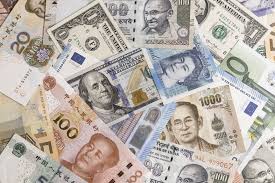In the calendar year 2023, the RBI added about USD 58 billion to its foreign exchange kitty. In 2022, India’s forex kitty slumped by USD 71 billion cumulatively.
New Delhi: There’s no looking back for India’s foreign exchange reserves as they yet again touched a fresh lifetime high. In the week that ended on July 5, the foreign exchange kitty rose by USD 5.158 billion to USD 657.155 billion, official data from the Reserve Bank of India (RBI) showed on Friday. The previous high was at USD 655.817 touched last month. The reserves have been rising on and off for a long time now. So far in 2024, they have risen about USD 35 billion, on a cumulative basis.
Read More: SBI unveils MSME Sahaj offering loans within 15 minutes; details here
According to the latest data released by the Reserve Bank of India (RBI), India’s foreign currency assets (FCA), the biggest component of the forex reserves, rose by USD 4.228 billion to USD 577.110 billion.
Gold reserves during the week rose by USD 904 million to USD 57.432 billion. India’s foreign exchange reserves are now sufficient to cover over 11 months of projected imports, according to a recent RBI report.
Read More: Latest personal loan interest rates: SBI, PNB, Bank of Baroda, HDFC Bank, ICICI Bank
In the calendar year 2023, the RBI added about USD 58 billion to its foreign exchange kitty. In 2022, India’s forex kitty slumped by USD 71 billion cumulatively. Forex reserves, or foreign exchange reserves (FX reserves), are assets that are held by a nation’s central bank or monetary authority. It is generally held in reserve currencies, usually the US Dollar and, to a lesser degree, the Euro, Japanese Yen, and Pound Sterling.
Read More: EPF interest rate for FY2023-24 notified – Check the latest rate
The country’s foreign exchange reserves last touched their all-time high in October 2021. Much of the decline after that can be attributed to a rise in the cost of imported goods in 2022. Also, the relative fall in forex reserves could be linked to the RBI’s intervention, from time to time, in the market to defend the uneven depreciation in the rupee against a surging US dollar.
Typically, the RBI, from time to time, intervenes in the market through liquidity management, including through the sale of dollars, to prevent a steep depreciation in the rupee. The RBI closely monitors the foreign exchange markets and intervenes only to maintain orderly market conditions by containing excessive volatility in the exchange rate, without reference to any pre-determined target level or band.





































